April 23, 2024
Troubles to Terrific Design and Succulents
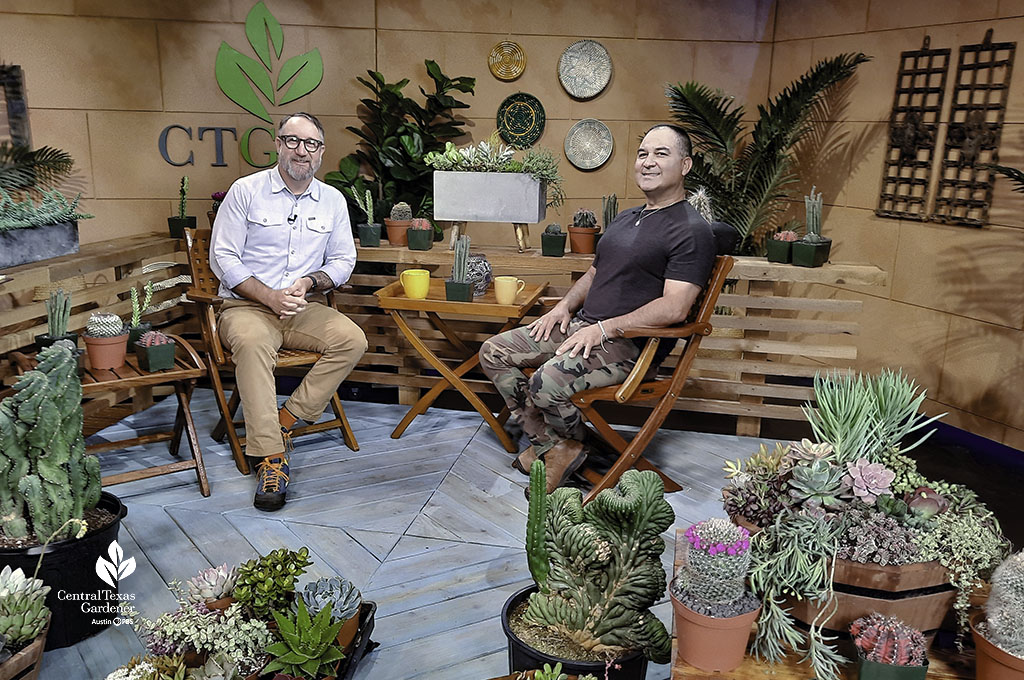
Something we hear a lot: “I killed my succulents! I thought they were so easy to grow. What did I do wrong?” You bet, succulents can be easy–but like anything else, we’ve got to treat them right. This week, Jay Arredondo from Desert to Tropics puts us on the right track to spectacular containers.
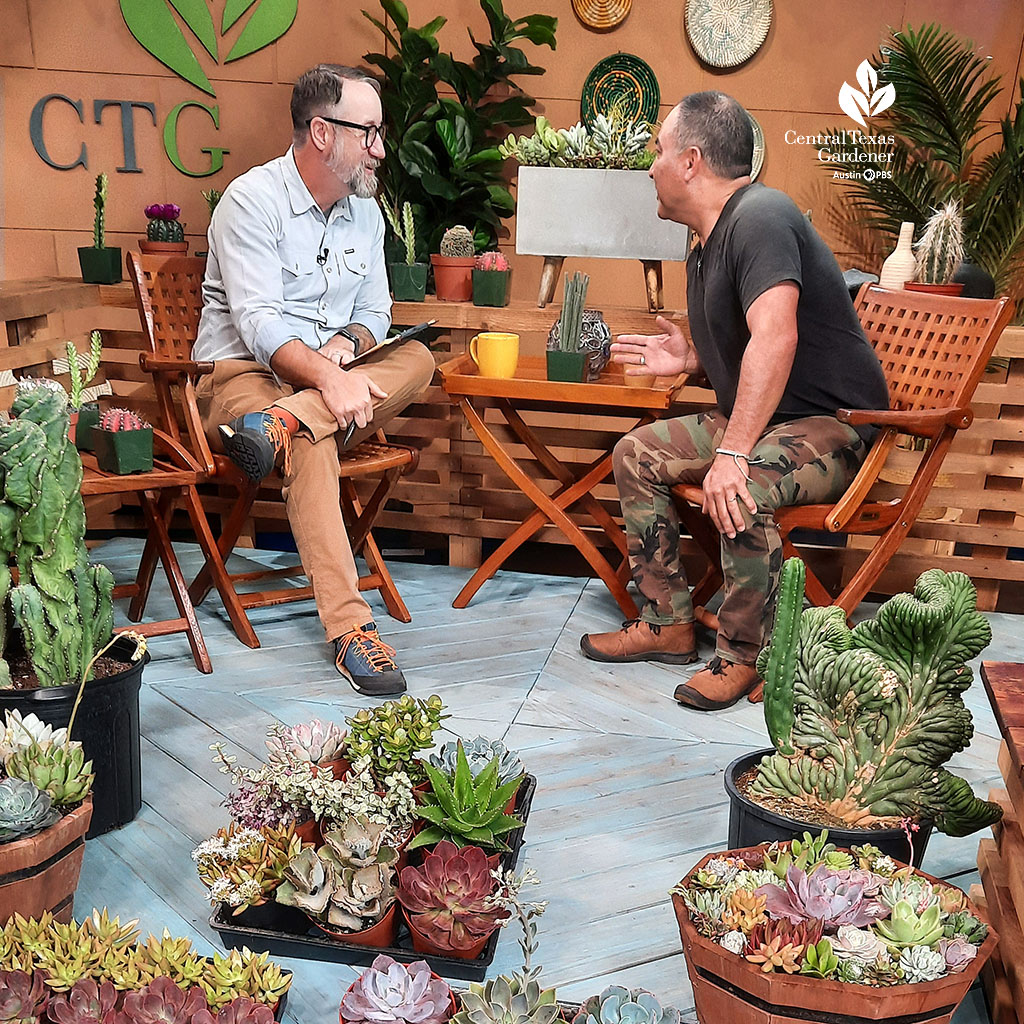
So, what’s the #1 reason that succulents end up in the compost pile? Overwatering! Then, our natural response to a sad-looking plant is to give it some more love via the watering can, Jay tells host John Hart Asher. Succulents–like sedum and echeveria–and cactus plants, store water in their unique fashions which is what makes them so drought-tolerant. “The roots breathe, they have an oxygen exchange. So when they are smothered, they can’t take in the oxygen like normal and that’s what makes them suffer,” Jay explains.
They do need water, yes. But wait until the soil is dry. Also, succulents can quickly rot in cold, wet winters, especially if planted in heavy soil.
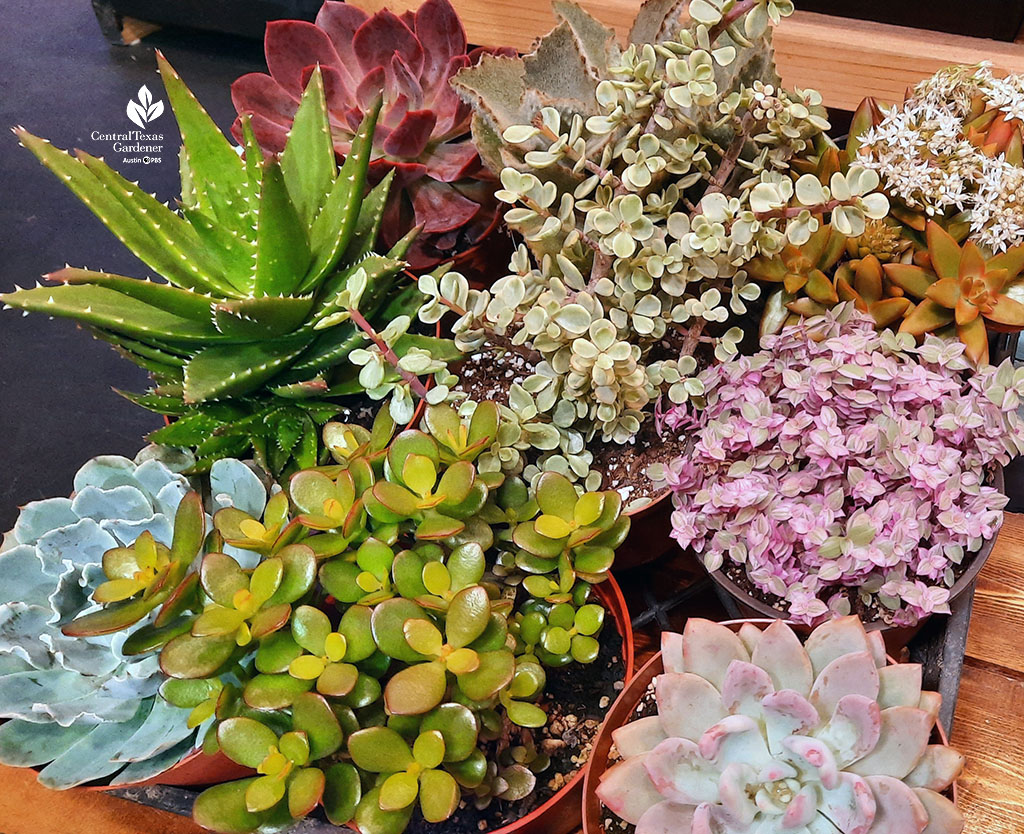
You also want a gritty, good draining soil mix. And you really need a container with a drainage hole for the long term. Often the nursery can drill it for you. If not, invest in a masonry bit. Here we’ve got jade, echeveria, variegated portulacaria, aloe, Kalanchoe ‘Fang’, sedum, and creeping inchplant (Callisia).
Succulents also like a little fertilizer. They’re not heavy feeders like tomatoes, but during the growing season will appreciate a balanced low N-P-K fertilizer diluted to ¼ strength. There are fertilizers marketed specifically for cactus and succulents.
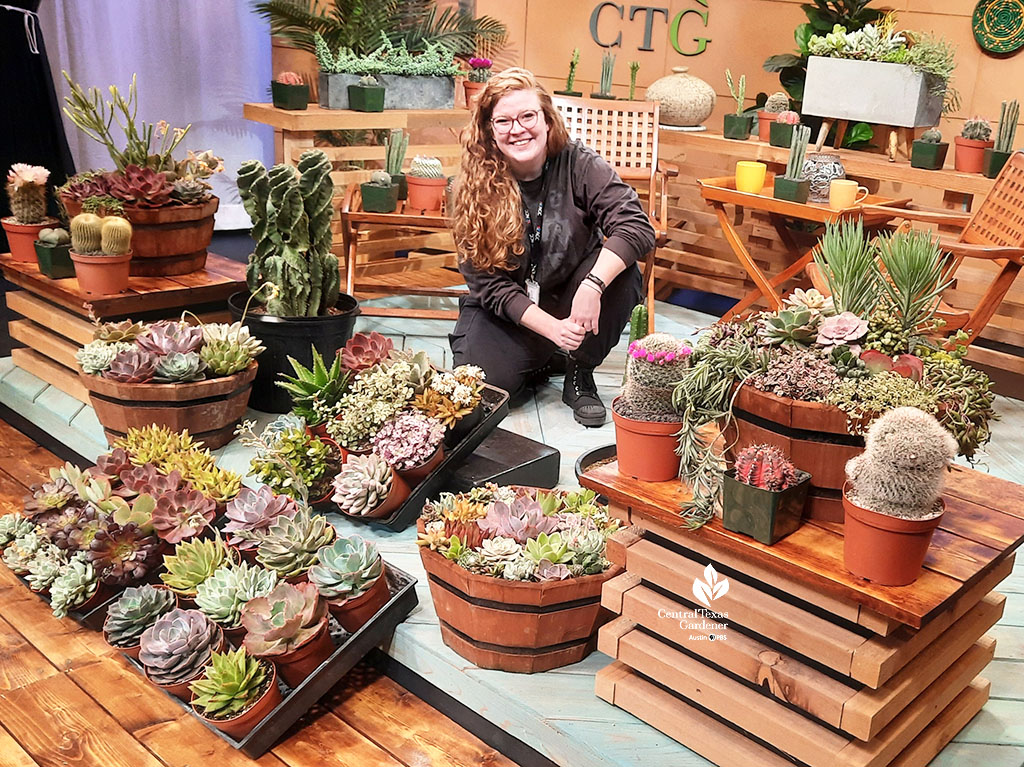
Camera operator Katie Nelson wanted to adopt them all! And she learned that many container succulents must go inside in winter. If you’re planting in the ground, check the plant’s cold hardiness rating. “Here in Central Texas, we have winters where they’re mild and some we have where we were like five degrees,” Jay reminds us. “So anything at five degrees isn’t going to make it, and I’d really like to say, you know, have better wishes for that. But for freezing temperatures, if they’re in containers, I would bring them in. And the cactus will fare better during a freeze than the succulents. And so, the best thing I would say is keep ’em dry.”
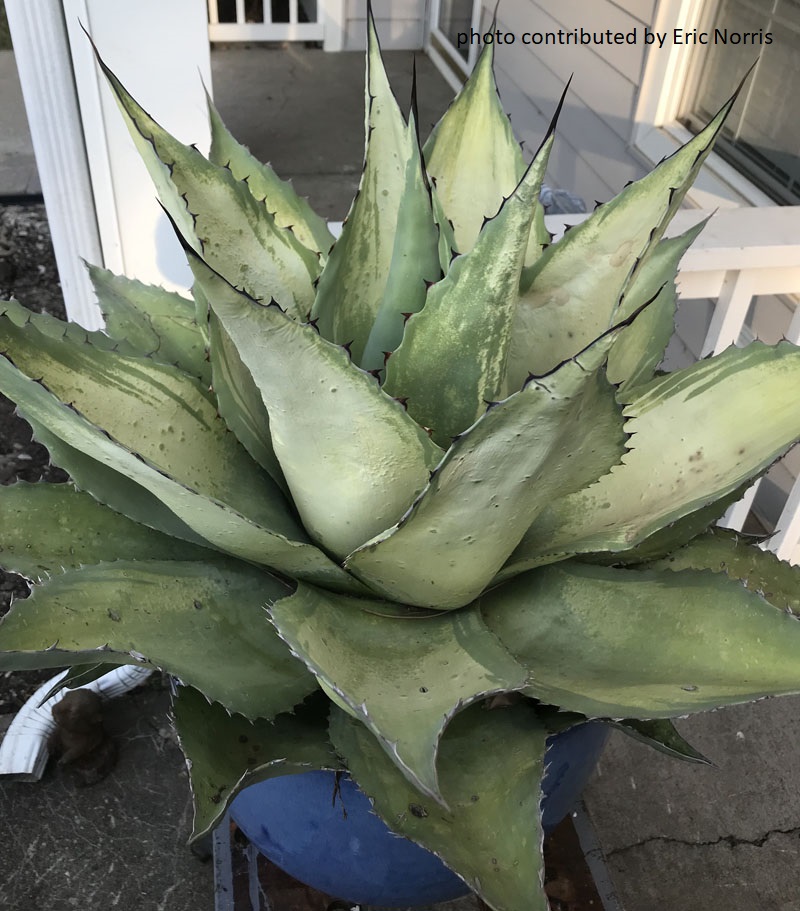
And although some succulents like the sun, too much of a good thing can lead to sunburn, like this agave. Although cactus can take more light, leafy succulents prefer dappled light in summer.
“In spring, they can take full sun, but as we get into the summer, when it gets blazing, they like to be backed off under patio light, under tree light,” Jay says. “If they’ve been acclimated in spring, some of them can definitely take a full sun situation all year round. But for the most part, the succulents, they’re gonna appreciate a little bit of shade. It’s kind of like if your skin’s burning and that sun’s beating on you; the plants are feeling the same way. They just can’t cool off as normal like other plants may with the thinner leaves, you know, they have a lot of water in ’em, it heats up.”
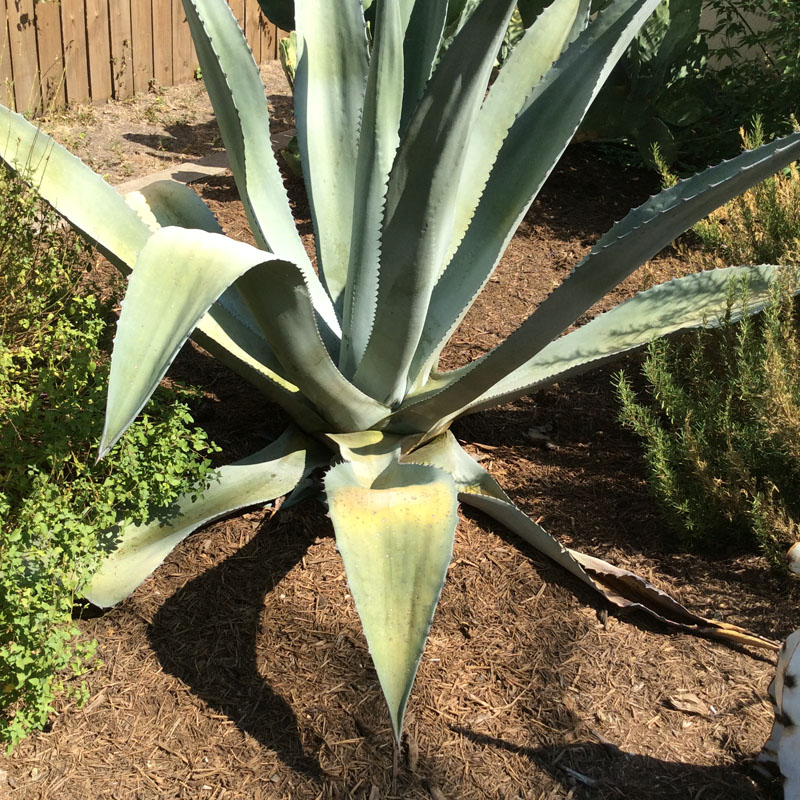
Containers can easily move, but we may have to shade in-ground plants when they show signs of stress, like Marissa Garrett’s Agave Americana.
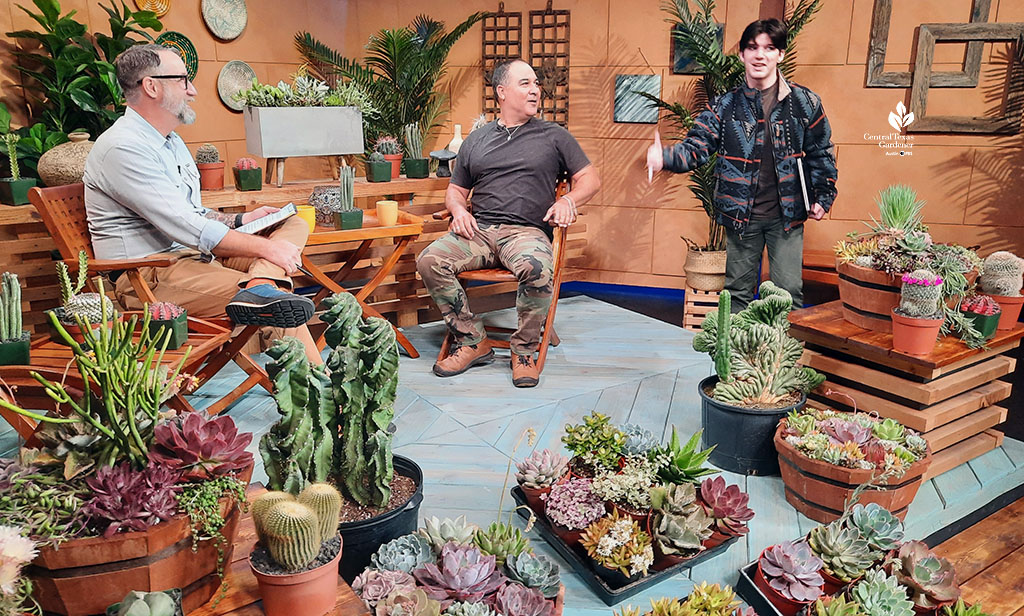
Jay’s been a part of CTG since his kids were small, so it’s been fun to watch them and Desert to Tropics grow up! One of his sons came along this time to remind us that we can find Jay’s plants at many nurseries or directly at Desert to Tropics in Del Valle.
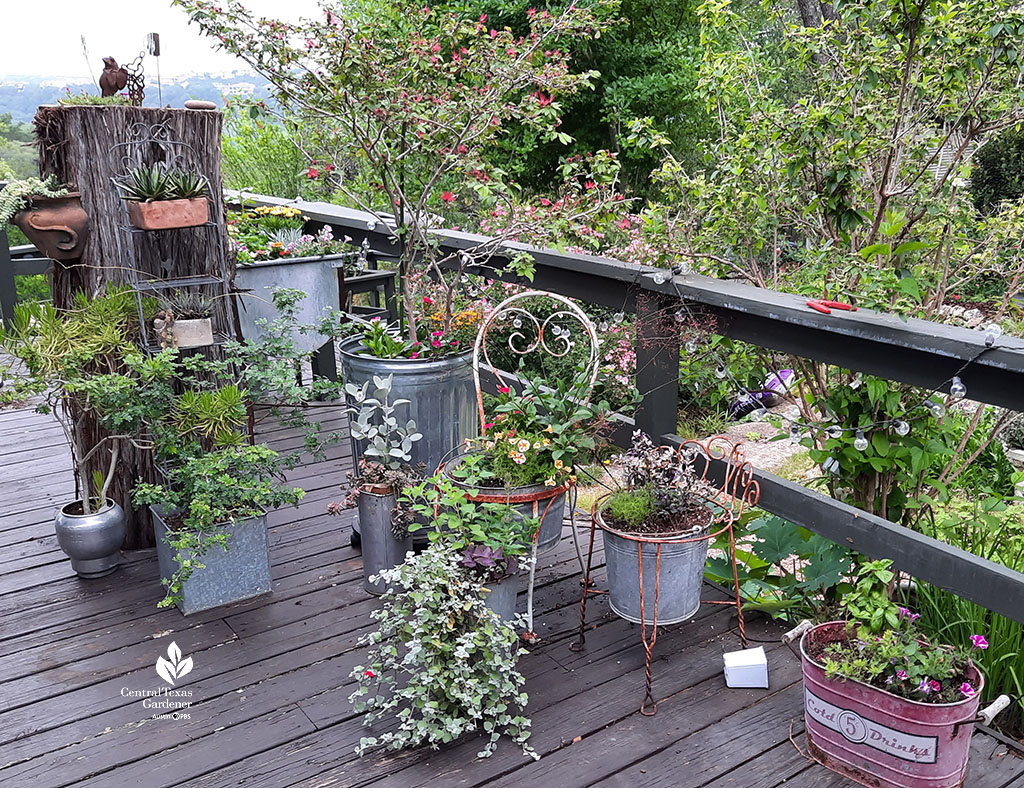
Next, another question we often get: “How much should I water my container plants?” That depends on several factors. Daphne explains, “First, what kind of plant do you have, and is it in shade or sun? Just as in the landscape, plants in containers have different water requirements, so first do a little research as to whether your plant is generally categorized as low, medium, or high-water use.”
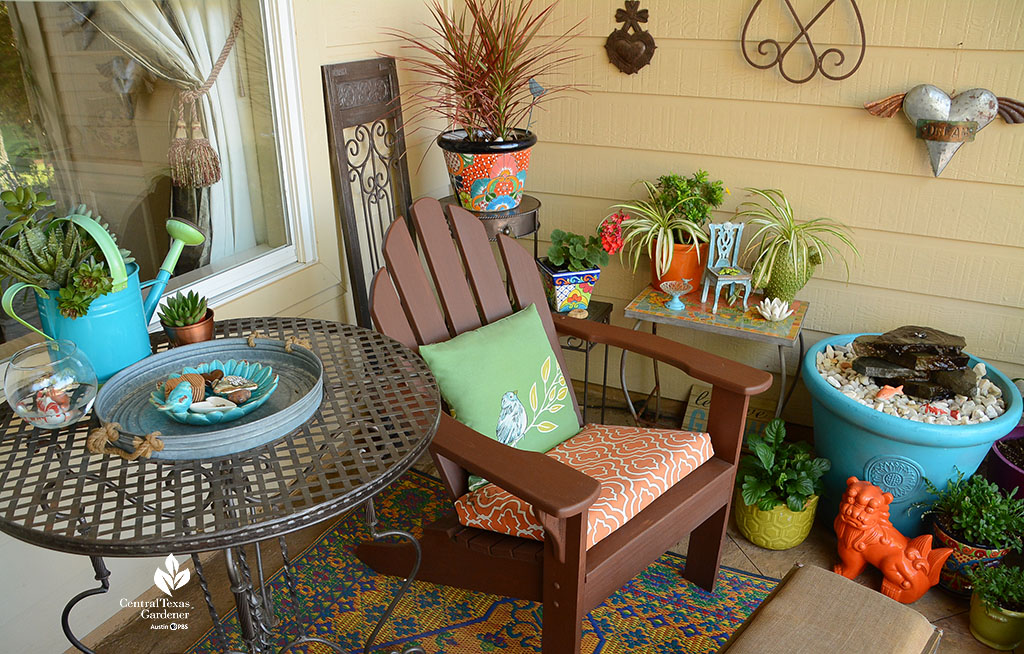
“Next, what type of container is it in? Unglazed terra cotta planters are extremely porous, and will need more water than glazed ceramic pots, plastic containers, or other materials. Also important is the maturity of the plant. Was it recently planted, and is it in the proper size container? A good rule of thumb is to only plant up by one size container as your plant grows and you transplant it. Too much soil surrounding the rootzone can set up a situation where the water stays too wet around the perimeter of the container, leading to potential disease and other issues.”
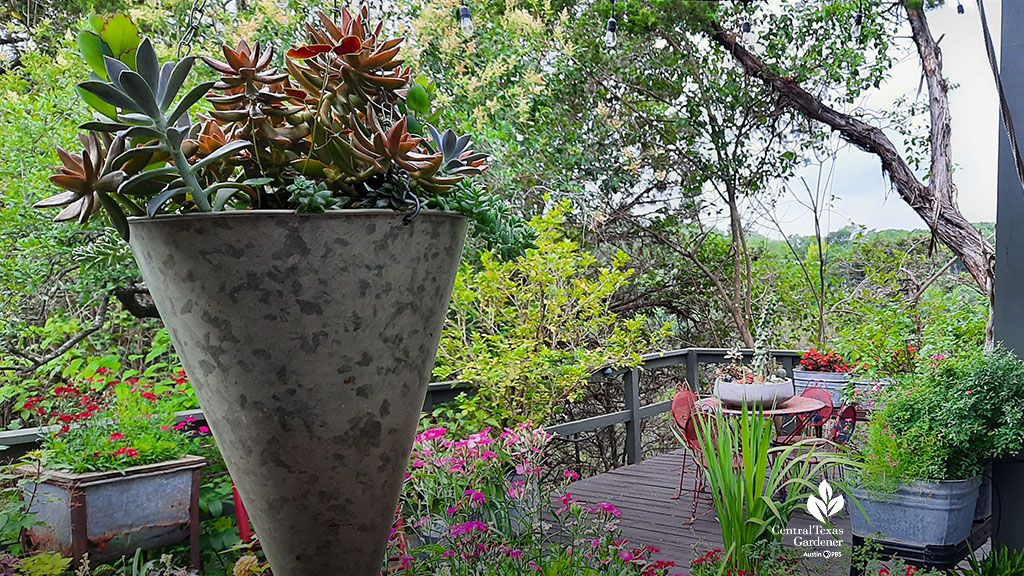
Next, is your container in full sun? What season of the year is it? In full sun in the middle of summer, many container plants might require water every day or even TWICE per day. And any wind at all will dry out your plants even faster. If the container is small enough to lift, I like to pick it up and gauge how dry the potting soil is by the weight of the pot.”
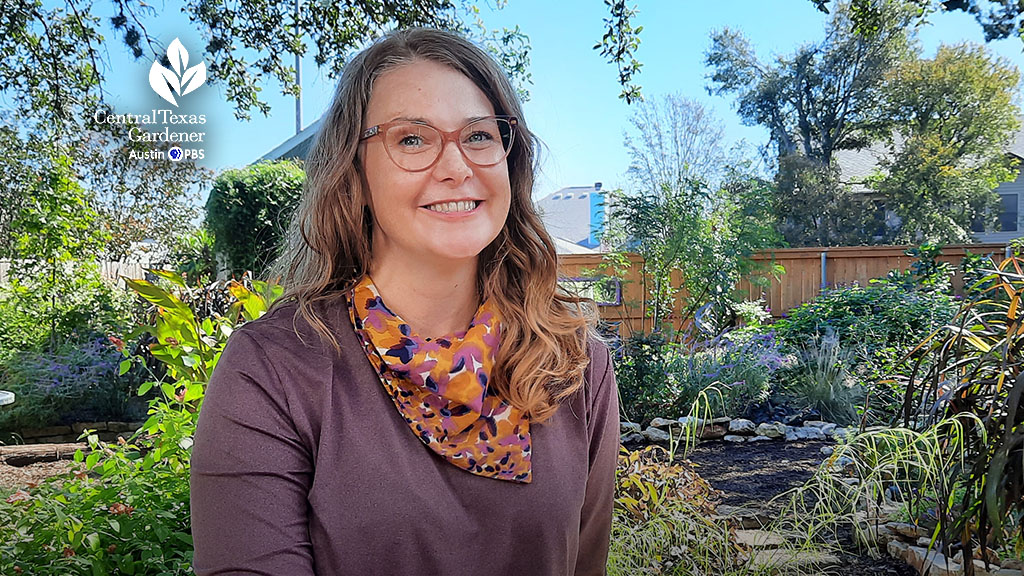
On tour in a trial-and-error process, Jennie Ostertag broke a few shovels turning her blank yard into magical moments for family, friends, and wildlife.
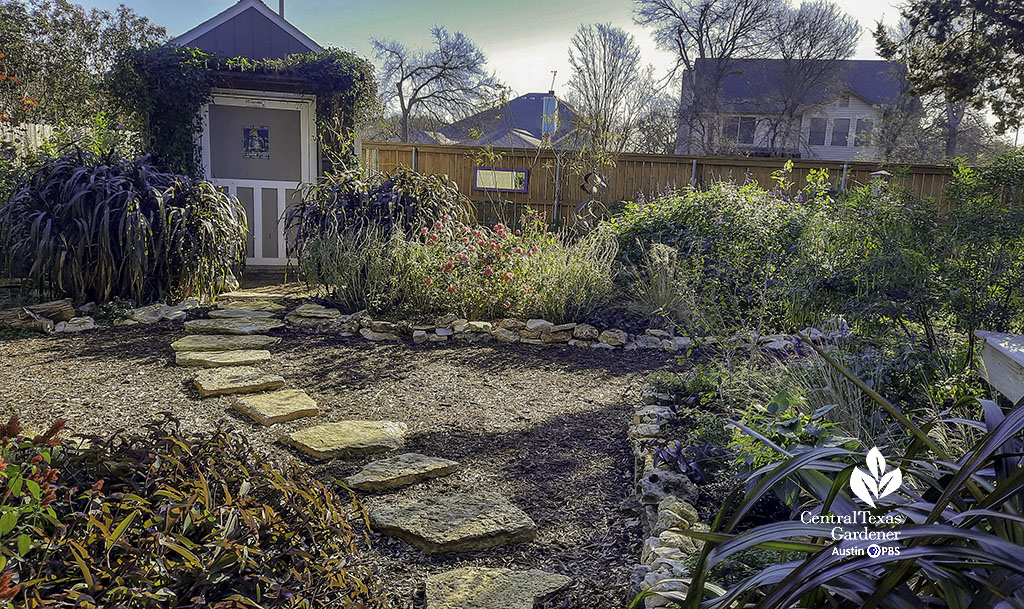
But as she struck rock, sheet mulched grass, and upcycled materials on a budget, she met a community of equally-challenged gardeners happy to share plants and advice.
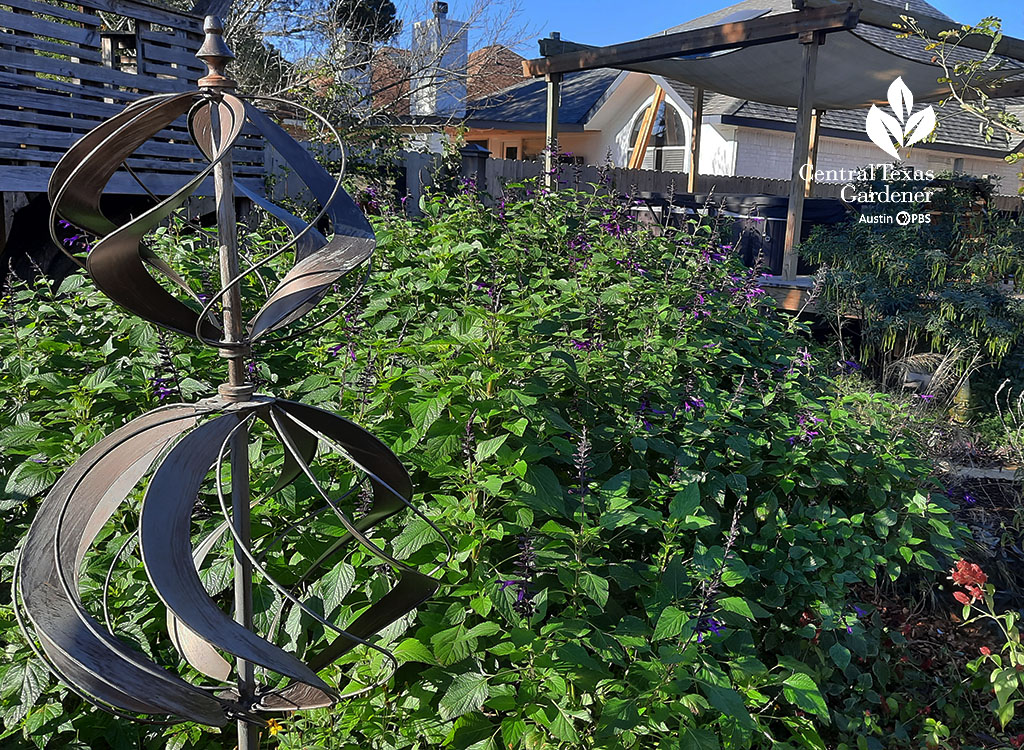
When working the soil became solace after a stressful work day, Jennie changed her life’s path, too. Read more about her garden.
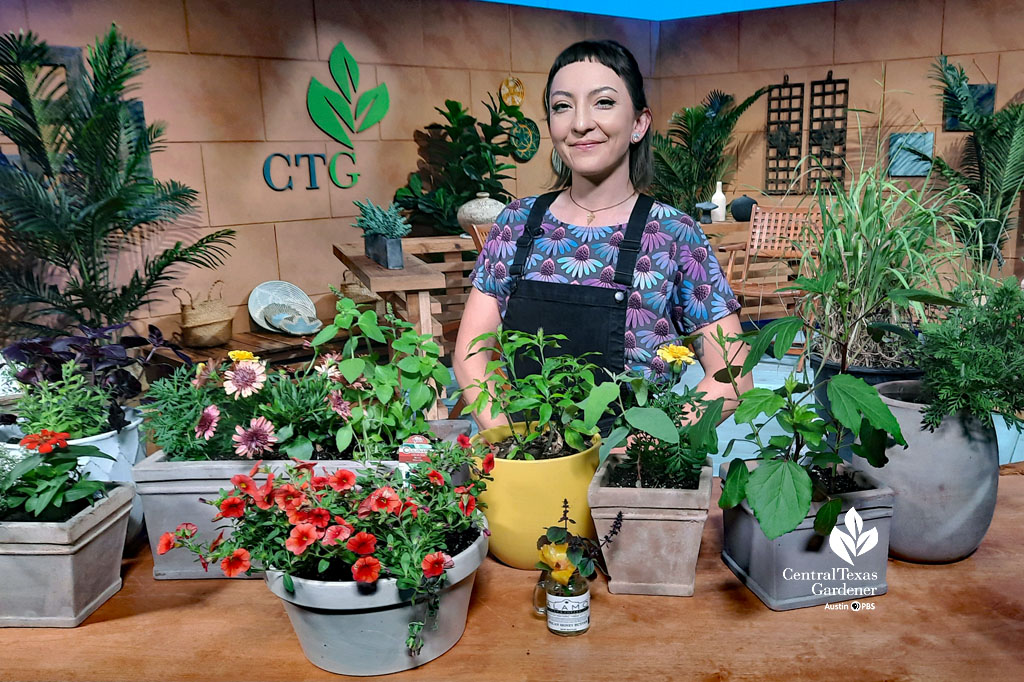
Melissa Hagen-Wilson pulls together fun, colorful, fragrant flowers and tasty herbs for containers or garden beds. Companion late spring flowers with 4-inch pots of heat-loving mints and basils that will fill the space when summer gears up and flowers fade. Just a few few of her tasteful buddies: Tulsi and marigold; calibrachoa and mint, and purple basil with purple petunia.
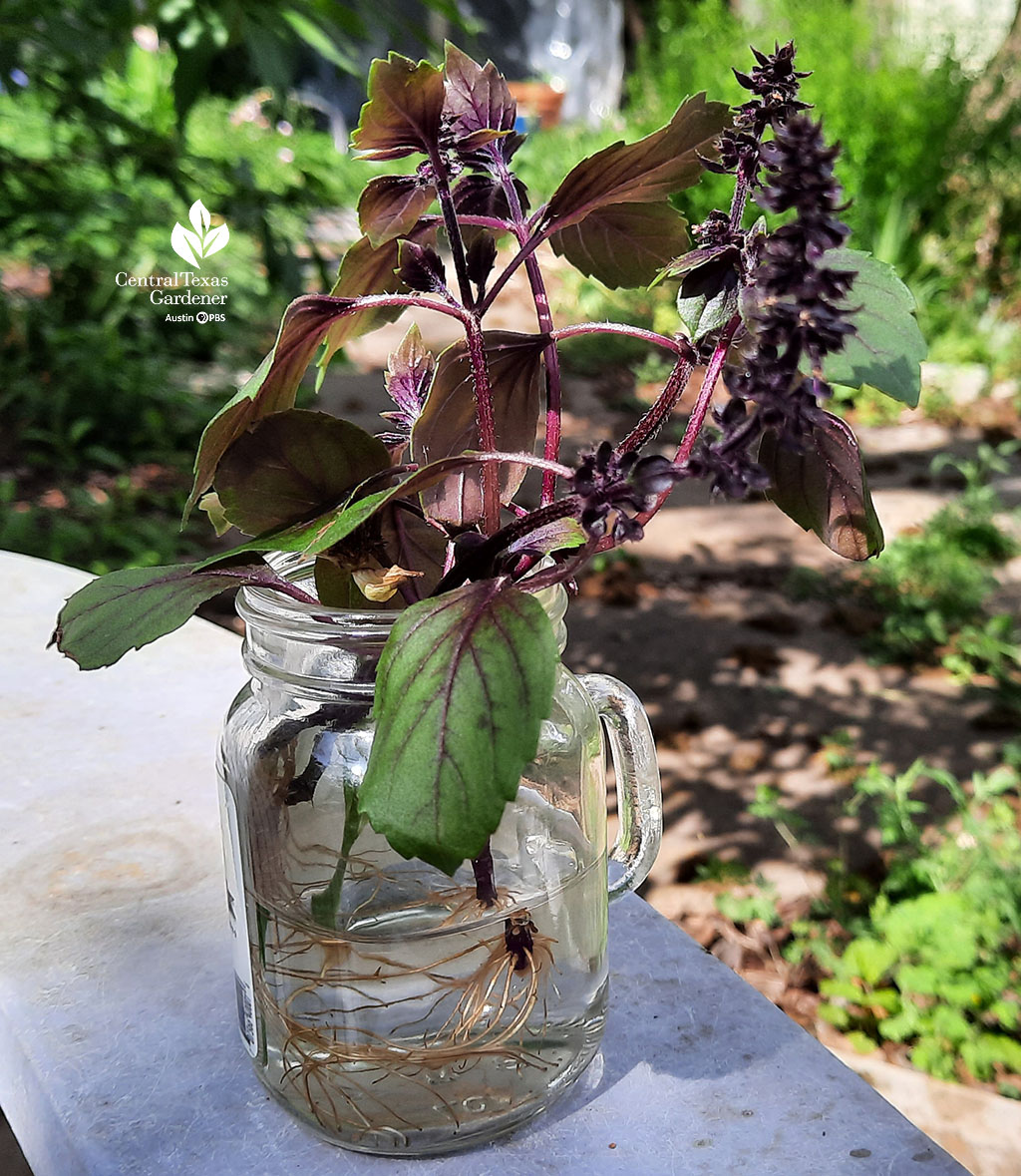
She brought along some African blue basil cuttings to show how to propagate your own plants. It was a real treat that she gifted me these bee-loved cuttings! I put the jar on a windowsill and five days later, the roots were long enough that I planted them in a starter pot for now.
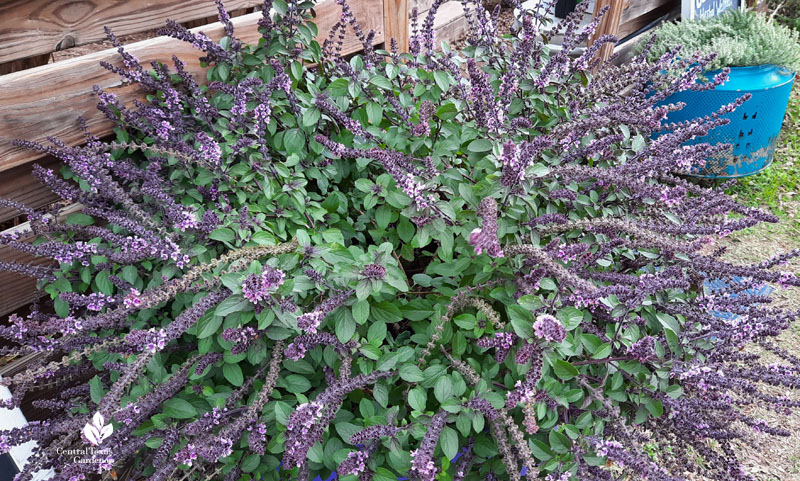
It’s a heat-loving champ that flowers until frost to please both bees and butterflies.
Watch now!
Thanks for stopping by! See you next week.

